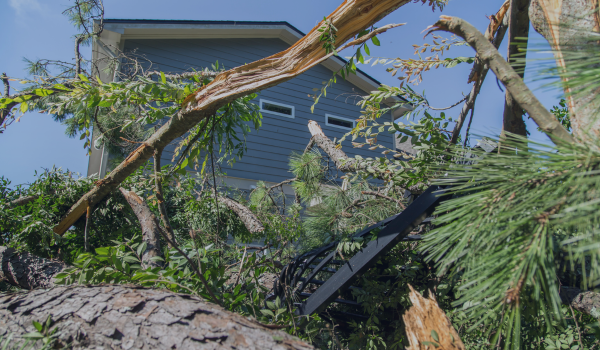A Guide to Windstorm Insurance
Living in regions prone to severe windstorms, such as hurricane-prone states like Florida or Alabama, comes with a unique set of challenges. While there are certainly benefits of living in these areas, it requires that you take a proactive approach to protect your home from damage caused by powerful winds and hail. Windstorm insurance is a crucial addition to your homeowner’s policy, providing comprehensive coverage and ensuring that you are financially protected against the unpredictable forces of nature.
What is Windstorm Insurance?
Windstorm insurance is a specialized form of property insurance designed to fill the gaps in your standard homeowner’s policy. In areas where severe windstorms are common, including those susceptible to hurricanes, damage caused by wind and hail may be excluded from your regular coverage. Windstorm insurance can be added as a supplement to your homeowner’s policy or obtained as a separate policy, working in tandem to provide comprehensive protection.
Coverage Offered by Windstorm Insurance
Windstorm insurance typically includes five essential types of coverage, each with its own limit of liability:
- Dwelling Coverage: Protects your home and any attached structures, covering the cost of rebuilding in the event of wind or hail damage.
- Other Structures Coverage: Extends coverage to structures not attached to your home, such as detached garages, sheds, or fences.
- Personal Property Coverage: Safeguards your belongings, including furniture, electronics, and clothing, with coverage limits often reaching up to 70% of your policy’s dwelling coverage.
- Loss of Rent Coverage: Reimburses lost rental income if your property becomes uninhabitable due to a windstorm.
- Loss of Use Coverage: Covers additional expenses, such as hotel stays and meals, incurred while your home is being repaired or rebuilt.
How Windstorm Insurance Works
Windstorm insurance is designed to cover damage caused by excessive wind events, such as hurricanes and cyclones, which are often considered vis major. These are natural occurrences that are both irresistible and beyond human control, leading to damages that are typically excluded from standard homeowners’ insurance policies. It’s important to note that windstorm insurance may not cover damages caused by storm surges or flooding associated with these events.
Filing a Windstorm Insurance Claim
In the aftermath of a windstorm, policyholders must act promptly to file a claim:
- Record the storm date and time.
- Assess and document all damage using photos and videos.
- Make temporary repairs to prevent further damage.
- Contact your insurance company to file a claim.
- Keep receipts if you need to relocate.
It’s crucial to act quickly, as many policies have time limitations for filing storm damage claims.
Who Needs Windstorm Insurance?
Residents in coastal communities, especially in states like Alabama, Delaware, Hawaii, and Florida, where wind and hail may be excluded from standard homeowners’ insurance, should consider windstorm insurance to safeguard their homes from coastal winds and named storms.
Reducing Windstorm Damage
Apart from insurance, there are proactive steps homeowners can take to minimize windstorm damage:
- Trim branches and trees.
- Secure outdoor furniture and potential debris.
- Install a disaster-proof garage door.
- Use storm shutters or plywood on windows and glass doors before a storm.
- Install impact-resistant storm shingles on your roof.
Conclusion
Windstorm insurance is a critical component of protecting your home in regions prone to severe windstorms. By understanding the coverage it provides, knowing how to file a claim, and taking proactive measures to reduce potential damages, homeowners can provide financial protection from the unpredictable forces of nature. If you reside in an area susceptible to windstorms, it’s essential to consult with insurance experts to ensure you have the right coverage to weather the storm.
At RMC Group, we review your insurance coverage with you annually to ensure you have the best coverage for your home. Contact our dedicated insurance team at 239-298-8210 to learn more about how we can help protect your home.



-Nov-07-2025-07-06-02-9436-PM.png)